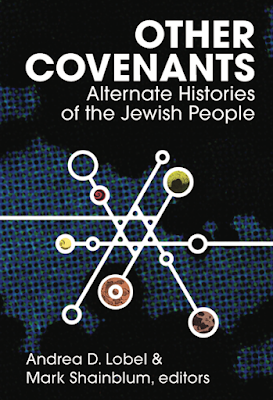Counterfactuals and Architectural History
I continue to be amazed by the
range of academic disciplines that have shown themselves open to exploring
counterfactual thinking.
I’m particularly thrilled to
see the Royal Academy of Arts in London sponsoring a mini-conference at the end
of November entitled, “What If?...Counterfactual Architectural History.”
In the past few years, I’ve
posted a variety of comments on this blog on the relationship between
counterfactual thinking and the built environment. But this is the first time I’ve seen a
methodical effort to explore the fascinating connections between the two.
The description of the
conference is as follows (click the LINK
for the full description):
“A panel of architectural historians explores a range of ‘what if’
scenarios in the history of architecture, posing alternative narratives that
lead us to re-think how existing accounts are written and perpetuated.”
“What if? It’s a question that historians have increasingly been asking.
How might the course of history have unfolded if particular events had turned
out differently, or alternative decisions had been made? The often-noted risk
of such an approach is to go too far and enter the realms of fantasy. But when
applied properly, counterfactual history can help us reassess whether
apparently pivotal events or decisions actually were as important as existing
historical accounts might have us believe.”
“Counterfactuals are most often applied to political
or military history, where human agency has to be weighed against broader
political, social, economic or technological forces. In this event, we apply
counterfactuals to architectural history, where a similar balance has to be
made.”
“Speakers will each focus on a particular ‘what if’
scenario and explore what other possibilities might have existed at this
particular historical moment. The following discussion will look at the roles
of narrative and causality in architectural history, and explore whether
counterfactuals do in fact offer the potential of shedding new light on the
architectural past.”
There is no reason why “what if” questions should not
inform architectural history. And in
fact, I expect to find in my ongoing research into the history of
counterfactual history that they have been present all along.
Imagine how the reputation of certain architects
would have been shaped had some of their unrealized designs actually been
built. Louis I. Kahn is acknowledged as
a 20th century master, but he is known just as much for what was
never built as what was.
Imagine if the Hurva synagogue (see images above) had
been completed in Jerusalem? Kent Larson’s
digital reconstructions provide a sense of missed opportunities that failed to be realized..
By the same token, there are countless architectural atrocities that we'd have been better off without (New Brutalism is in currently in vogue, but I never much liked it -- Boston City Hall anyone? Maybe we'd have a more beautiful world without it....)
The list is certainly endless.




Comments